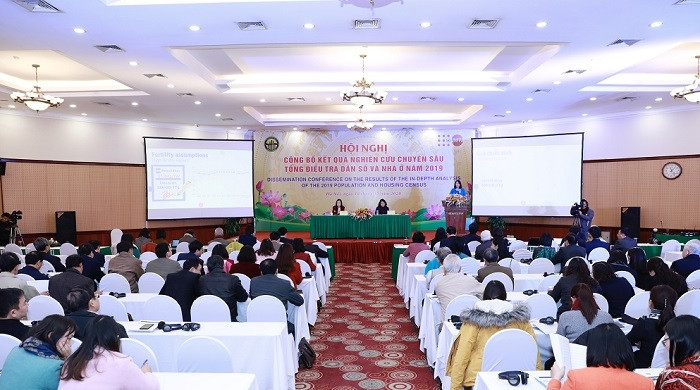The aforementioned information was released at a conference held by the Ministry of Planning and Investment’s General Statistics Office (GSO) in Hanoi on December 18 to disseminate the results of the in-depth analysis of the 2019 Vietnam Population and Housing Census.
The 2019 Population and Housing Census was conducted at 0:00 a.m. on April 1, 2019, in accordance with the Prime Minister’s Decision No. 772/QD-TTg dated 26 June 2018. It was the fifth Population and Housing Census in Vietnam since the country’s reunification in 1975. The census collected basic information on population and housing throughout the territory of Vietnam to support the country’s socioeconomic development policies and to monitor progress towards the Sustainable Development Goals as committed to by the Vietnamese Government.
Speaking at the conference, GSO General Director Nguyen Thi Huong said the results of the 2019 Population and Housing Census were announced on December 19, 2019, noting that following these results, the GSO carried out an in-depth analysis of several population topics, including fertility, sex imbalance at birth, migration and urbanisation, population ageing and projections for Vietnam’s population across the 2019-2069 period.
The key findings of these studies aim to provide further information about the current situation, trends and factors influencing the population, as well as proposing suggestions for achieving the Sustainable Development Goals, she added.

GSO General Director Nguyen Thi Huong speaks at the conference.
“With the determination and close direction of the steering committees on the census at all levels and the involvement of the entire political system, the 2019 Population and Housing Census was successfully implemented with many new and innovative features, particularly the application of information technology, helping shorten the investigation times, publish the results sooner and reduce costs,” Huong said.
Naomi Kitahara, United Nations Population Fund (UNFPA) Representative in Vietnam, highlighted the importance of the event given the great value of the census data for the nation in developing and monitoring policies, strategies, plans, programmes, and budgets at both central and local levels.
These statistics will help the international community understand more clearly the progress made by Vietnam as well as areas where the country needs international support, including the realisation of the 2030 Agenda for Sustainable Development, she said.

UNFPA Representative in Vietnam Naomi Kitahara speaks at the event.
As released at the conference, Vietnam has maintained a stable replacement level fertility for more than a decade, and the practice of having two children remains a prevalent trend. These results once again affirm that Vietnam has successfully implemented the Population and Family Planning Programme with the aim of reducing fertility.
Another finding is that there is a close relationship between migration and urbanisation. Migrants aged five and above account for 12.3% of the urban population. Immigration pressure on special-class cities is the greatest, as there are nearly 200 immigrants for every 1,000 residents living in special-class cities, which is 2.7 times higher than the national average.
According to the in-depth analysis of the 2019 Population and Housing Census, the current fertility of Vietnam is around replacement level fertility and will contribute to the reduction of population growth in the future. The annual population growth rate for the next 10 years is expected to be less than 1%. Given the current situation of low fertility, population structure and high sex ratio at birth, the future population structure will change towards an aged population and shortages of men in certain age groups. This will have a dramatic impact on the workforce and contribute to emerging social issues. In addition, migration trends and the impact of migration on urbanisation and socioeconomic development will also become emerging issues in the near future.
Data and analysis based on the 2019 census and related studies will provide evidence for use in the formulation and planning of national socioeconomic development policy.
















